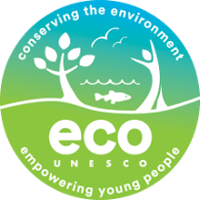Between December 2 and December 14, 2018, COP 24 took place in Katowice, Poland, and it involved almost 30,000 participants, including official Parties, observer states, NGOs, media and more, trying to agree on a “rulebook” for the Paris Agreement on Climate Change.
The launching ceremony was opened by the new COP president, Michał Kurtyka, who stated:
‘I believe it is difficult to imagine a better place than Poland to elaborate a common position for all countries concerning climate policy. In the last thirty years our country reduced its greenhouse gas emissions by 30% while constantly developing its economy at the same time. We invest in new technologies and innovation – for example electromobility.’
COP 24 is the informal name for the 24th Conference of the Parties to the United Nations Framework Convention on Climate Change (UNFCCC). The UNFCCC is one of the conventions adopted on the occasion of the Rio Earth Summit in 1992, which entered into force on March 21, 1994, with the goal of preventing any harmful interference of men on the planet climate system. All the countries that have ratified the Convention are called Parties to the Convention, and they meet every year to make sure that provisions adopted by the Convention are effectively implemented.
Several key issues were discussed over the course of the past two weeks. During the first week, two declarations gained the full support of the Parties. The first one, ‘Solidarity and Just Transition Silesia Declaration’, is a document on reaching climate protection targets while maintaining economic development and workplaces in the spirit of Solidarity’s heritage. The second one discusses actions towards the development of electromobility – ‘Driving Change Together – Katowice Partnership for E-mobility’.
According to officials, the number of countries supporting these declarations “is an important message that brings hope, and opens opportunities for effective implementation of modern and environmentally friendly technologies“.
During the second week of the conference, negotiations on the implementation package of the Paris Agreement were carried out in working groups consisting of two ministers, one from a developed country and the other from a developing country. The second week ended with the approval of the ‘Forests for Climate’ declaration.
Overall, a wide range of issues were discussed and agreed on, including how governments will measure, report on and verify their emissions-cutting efforts. Although a key element was absent from the talks – how countries will step up their targets on cutting emissions – 2020 was established as a deadline for countries to reach such targets. Finally, one of the main lesson learnt from the conference is that, after a few years of stable levels in world’s carbon emissions, they now appear to be rising again. The use of coal and oil continues, and in fact, it drives a big part of the world’s economy. On the other hand, clean energy is developing at a faster pace than expect and at a cheaper price. However, its adoption must be speeded up, in order to be able to cut down emissions and meet the established targets by 2020.



